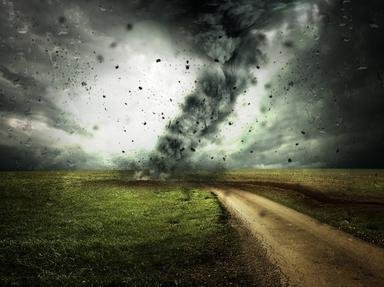Quiz Answer Key and Fun Facts
1. Hurricane Hazel was responsible for approximately 1,000 deaths in Haiti before it made landfall near Wilmington, NC in 1954. The deadly storm then made unprecedented history when it did which of the following?
2. The vast majority of landfalling hurricanes occur during the months of August and September, but in 1998, a late October storm struck Central America, causing thousands of deaths and billions of dollars in damage. What was the name of this devastating system?
3. In 2003, the eastern eyewall of Hurricane Fabian passed over land on September 5. Although not technically a landfalling system, the powerful Category 3 storm caused significant damage to what island?
4. The tropical season of 2005 will be long remembered as history's worst to date, and Katrina's devastation brought worldwide attention to the Gulf Coast. Less than a month later, which system made landfall near the Texas-Louisiana border as a Category 3 storm?
5. The year was 1996, and for the first time in over four decades, mainland North Carolina experienced two landfalling hurricanes during the same season. What were the names of these systems?
6. Thankfully, Category 5 storms rarely come onshore at full intensity. In 1969, Camille devastated the Gulf Coasts of Alabama, Louisiana and Mississippi. In what year was the next US Category 5 landfall?
7. Hurricane Gloria (1985) struck a region that rarely experiences direct landfalls. In what city did the Category 2 system come ashore?
8. Which September, 1988 storm brought widespread disaster to Mexico and Central America before spawning dozens of deadly tornadoes in southern Texas?
9. Landfalling tropical systems are much less frequent in South Carolina than in other southeastern states, but in 1989, parts of the Charleston area were destroyed by a Category 4 storm that will long be remembered by residents in both of the Carolinas. What was the name of this deadly cyclone?
10. In 1999, the largest evacuation in the US to that date took place in anticipation of Hurricane Floyd. Floyd made landfall near Wilmington, NC on September 16, causing billions of dollars in property damage and thirty-five deaths in North Carolina. Which aspect of the storm was responsible for most of the deaths?
Source: Author
Coonielady
This quiz was reviewed by FunTrivia editor
bloomsby before going online.
Any errors found in FunTrivia content are routinely corrected through our feedback system.

